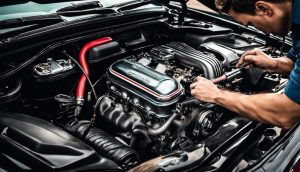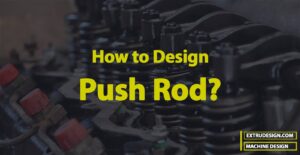In today’s fast-paced lifestyle, having a car is essential for quick and efficient mobility. However, owning one involves a certain responsibility – understanding its basic mechanisms, maintaining it regularly, troubleshooting common problems, and dealing with repairs. From gaining a grasp of engine operations, the cooling and heating system, the brake system, and the electrical network, […]
Navigating Through Challenges in the Automotive Industry
The constant evolution of technology and shifting societal needs are collectively engendering tectonic disruptions within the global automotive industry. It’s a landscape that is being increasingly defined not by horsepower and conventional engine prowess but by the unprecedented adoption of electric vehicles, autonomous technology, stringent emission norms, and fluctuating consumer behaviors. Governments worldwide are imposing […]
Battery Technology in the Automotive Industry
With the rise of electric vehicles and a global push towards clean energy, there’s arguably no better time than now to take a deep dive into the domain of automotive batteries. Spanning from their humble beginnings as lead-acid powerhouses to the sophisticated lithium-ion variants dominating today’s market, automotive batteries have come a long way. This […]
Understanding Tire Technology and the Materials Used
As an integral part of every motor vehicle, tires hold a critical responsibility for safety, fuel efficiency, and overall vehicle performance. Understanding the basics of tire technology allows users to make informed choices, ensuring optimal tire longevity and vehicle performance. This rich exploration begins with looking into the rudimentary concepts of tire construction. It delves […]
Calculating Belt Slip in Belt Drive Systems
Belt drives are integral components of many mechanical systems and understanding their operation is pivotal, particularly the phenomenon of belt slip. This comprehensive exploration dives into the complex world of belt drive systems, delving into the functionality of individual components, with a special concentration on belt slip. Belt slip, an occasional inevitable occurrence, often impacts the […]
What are the Types of Flat Belt Drives?
The belts or ropes are used to transmit power from one shaft to another by means of pulleys that rotate at the same speed or at different speeds. The material used for belts and ropes must be strong, flexible, and durable. It must have a high coefficient of friction. There are 3 types of belts, Flat belts […]
Coefficient of Friction Between Belt and Pulley
The belts or ropes are used to transmit power from one shaft to another by means of pulleys that rotate at the same speed or at different speeds. The material used for belts and ropes must be strong, flexible, and durable. It must have a high coefficient of friction. Let us discuss the coefficient of friction between […]
Selection of a Belt Drive for Your Application
The belts or ropes are used to transmit power from one shaft to another by means of pulleys that rotate at the same speed or at different speeds. The material used for belts and ropes must be strong, flexible, and durable. It must have a high coefficient of friction. Let us discuss the criteria for the Selection […]
Different Materials Used for Belts in Belt Drives
The belts or ropes are used to transmit power from one shaft to another by means of pulleys that rotate at the same speed or at different speeds. The material used for belts and ropes must be strong, flexible, and durable. It must have a high coefficient of friction. Let us see what are the different […]
Different Types Of Screw Threads Used For Power Screws
The power screws (also known as translation screws) are used to convert rotary motion into translatory motion. For example, in the case of the lead screw of lathe, the rotary motion is available but the tool has to be advanced in the direction of the cut against the cutting resistance of the material. Let us discuss the […]
What are the Forces Acting on a Connecting Rod?
Among the basic components of an Internal Combustion engine, the Connecting Rod for IC Engine is the most critical. The connecting rod is subjected to alternating direct compressive and tensile forces. Since the compressive forces are much higher than the tensile forces, therefore the cross-section of the connecting rod is designed as a strut and Rankine’s formula is used. […]
Design of Connecting Rod for IC Engine
Among the basic components of an Internal Combustion engine, the Connecting Rod for IC Engine is the most important and critical. The connecting rod is subjected to alternating direct compressive and tensile forces. Since the compressive forces are much higher than the tensile forces, therefore the cross-section of the connecting rod is designed as a strut and […]
How to Design Push Rods for IC Engine?
Among the basic components of an Internal Combustion engine, the Push rod is one of the critical components. The push rods are used in overhead valve and side valve engines. Since these are designed as long columns, therefore Euler’s formula should be used. The push rods may be treated as pin-end columns because they use spherical […]
How to Design a Piston Rod?
Among the basic components of an Internal Combustion engine, the Piston rod is one of the most critical components. Since this Piston rod moves forward and backward in the engine cylinder, it is subjected to alternate tensile and compressive forces. It is usually made of mild steel. One end of the piston rod is secured […]
Long Columns Subjected to Eccentric Loading
A machine part subjected to an axial compressive force is called a strut. A strut may be horizontal, inclined, or even vertical. But a vertical strut is a column, pillar, or stanchion. The machine members that must be investigated for column action are piston rods, valve push rods, connecting rods, screw jack, side links of toggle jack, etc. We discussed Euler’s […]
What is Johnson’s Formulae for Columns?
A machine part subjected to an axial compressive force is called a strut. A strut may be horizontal, inclined, or even vertical. But a vertical strut is known as a column, pillar, or stanchion. The machine members that must be investigated for column action are piston rods, valve push rods, connecting rods, screw jack, side links of toggle jack, etc. In […]
What is Rankine’s Formula for Columns?
Usually, it is a common phenomenon observed in long columns failure due to buckling load and the short columns usually fail due to crushing load. The Rankine-Gordon formula assumes a combined failure mode which is combined buckling and crushing loads in columns. This common mode is known as the Rankine formula for columns. Hence, we […]
What is Euler’s Column Theory?
A machine part subjected to a vertical axial compressive force is called a column. it is also known as a pillar or stanchion. We see this vertical axial compressive force such as piston rods, valve push rods, connecting rods, screw jack, side links of toggle jack, etc. The first rational attempt, to study the stability of long columns, […]
What is Column? | Failure of a Column
A machine part subjected to an axial compressive force is called a strut. A strut may be horizontal, inclined, or even vertical. But a vertical strut is known as a column, pillar, or stanchion. The machine members that must be investigated for column action are piston rods, valve push rods, connecting rods, screw jack, side links of toggle jack, etc. Let […]
Procedure for Designing Rocker’s Arm for Exhaust Valve
A rocker’s arm is a valvetrain component that typically transfers the motion of a push rod to the corresponding intake/exhaust valve. The rocker’s arm is used to actuate the inlet and exhaust valve motion as directed by the cam and follower. Let us see if we can design Rocker’s Arm for Exhaust Valve for a petrol […]
- « Previous Page
- 1
- 2
- 3
- 4
- 5
- 6
- …
- 31
- Next Page »





















